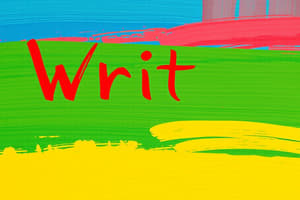Podcast
Questions and Answers
What is the definition of alliteration?
What is the definition of alliteration?
- Repetition of consonant sounds at the beginning of words that are close to one another. (correct)
- A reference to a well-known person or event.
- The use of contrasting ideas in close proximity.
- Repetition of vowel sounds in nearby words.
Which of the following is an example of allusion?
Which of the following is an example of allusion?
- Scrooge's transformation is a central theme. (correct)
- Let freedom ring from the mighty mountains.
- Fear leads to anger; anger leads to hate.
- Mickey Mouse and Donald Duck are friends.
In the example 'Fear leads to anger. Anger leads to hate. Hate leads to suffering.', what rhetorical device is being used?
In the example 'Fear leads to anger. Anger leads to hate. Hate leads to suffering.', what rhetorical device is being used?
- Allusion
- Anadiplosis (correct)
- Anaphora
- Alliteration
What is the function of anaphora in a speech?
What is the function of anaphora in a speech?
Which phrase exemplifies anaphora from the given content?
Which phrase exemplifies anaphora from the given content?
Which of the following is NOT a characteristic of anadiplosis?
Which of the following is NOT a characteristic of anadiplosis?
What is the primary purpose of using rhetorical devices like alliteration and anaphora?
What is the primary purpose of using rhetorical devices like alliteration and anaphora?
Which example best represents an alliteration?
Which example best represents an alliteration?
What is meant by antithesis in language?
What is meant by antithesis in language?
Which of the following best describes apostrophe as a figure of speech?
Which of the following best describes apostrophe as a figure of speech?
What is the primary effect of asyndeton in a sentence?
What is the primary effect of asyndeton in a sentence?
What does chiasmus typically involve?
What does chiasmus typically involve?
Which sentence is an example of a hortative sentence?
Which sentence is an example of a hortative sentence?
What literary device is characterized by the inversion of the normal sentence order?
What literary device is characterized by the inversion of the normal sentence order?
What does juxtaposition aim to highlight?
What does juxtaposition aim to highlight?
In the context of language, what is the purpose of a hortative sentence?
In the context of language, what is the purpose of a hortative sentence?
What is litotes primarily characterized by?
What is litotes primarily characterized by?
Which example best illustrates the use of metonymy?
Which example best illustrates the use of metonymy?
What does an oxymoron typically involve?
What does an oxymoron typically involve?
Which of the following best defines parallelism?
Which of the following best defines parallelism?
Personification is best described as the:
Personification is best described as the:
Which statement best represents polysyndeton?
Which statement best represents polysyndeton?
What type of question is known as a rhetorical question?
What type of question is known as a rhetorical question?
The phrase 'the pen is mightier than the sword' exemplifies which literary device?
The phrase 'the pen is mightier than the sword' exemplifies which literary device?
Flashcards
Alliteration
Alliteration
Repetition of consonant sounds at the beginning of words that are close to one another.
Allusion
Allusion
A reference to a well-known person, place, or thing from literature, history, etc.
Anaphora
Anaphora
Repetition of a word, phrase, or clause at the beginning of two or more sentences in a row.
Anadiplosis
Anadiplosis
Signup and view all the flashcards
Antithesis
Antithesis
Signup and view all the flashcards
Apostrophe
Apostrophe
Signup and view all the flashcards
Asyndeton
Asyndeton
Signup and view all the flashcards
Hortative Sentence
Hortative Sentence
Signup and view all the flashcards
Chiasmus
Chiasmus
Signup and view all the flashcards
Inversion
Inversion
Signup and view all the flashcards
Juxtaposition
Juxtaposition
Signup and view all the flashcards
Litotes
Litotes
Signup and view all the flashcards
Metaphor
Metaphor
Signup and view all the flashcards
Metonymy
Metonymy
Signup and view all the flashcards
Oxymoron
Oxymoron
Signup and view all the flashcards
Parallelism
Parallelism
Signup and view all the flashcards
Personification
Personification
Signup and view all the flashcards
Rhetorical Question
Rhetorical Question
Signup and view all the flashcards
Polysyndeton
Polysyndeton
Signup and view all the flashcards
Study Notes
Rhetorical Devices
-
Alliteration: Repetition of consonant sounds at the beginning of words that are close together. Examples: Mickey Mouse, Donald Duck.
-
Allusion: Reference to a well-known person, place, or thing from literature, history, etc. Examples: Eden, Scrooge, Prodigal Son.
-
Anaphora: Repetition of a word, phrase, or clause at the beginning of successive sentences. It creates emphasis and cohesion. Example: "We shall not flag or fail. We shall go on to the end. We shall fight in France..."
-
Anadiplosis: Repetition of the last word of one clause at the beginning of the following clause. Example: "Fear leads to anger. Anger leads to hate. Hate leads to suffering."
-
Antithesis: Presenting two contrasting ideas in balanced phrases, clauses, or paragraphs. Examples: "The world will little note, nor long remember, what we say here, but it can never forget what they did here."
-
Apostrophe: Addressing an absent or nonexistent person, place, or thing as if it were present and could understand. Examples: "Welcome, O life!"
-
Asyndeton: Using commas to connect a series of items without conjunctions. This creates a sense of speed and urgency. Example: "We shall pay any price, bear any burden, meet any hardships, support any friend, oppose any foe..."
-
Chiasmus: Repetition of ideas in inverted order. Example: "Ask not what your country can do for you; ask what you can do for your country."
-
Hortative Sentence: Sentence that exhorts, urges, entreats, implores, or calls to action.
-
Inversion: Reversing the typical word order (subject-verb-object) in a sentence to emphasize a specific element. Example: "Are you going to the store?"
-
Juxtaposition: Placing two things closely together to emphasize similarities or differences.
-
Litotes: Deliberate understatement, often achieved by negating the opposite.
-
Metaphor: Comparing two unlike things without using "like" or "as." Example: "My love is a fragile flower."
-
Metonymy: Using one thing to represent another associated thing. Example: "The pen is mightier than the sword."
-
Oxymoron: Paradoxical juxtaposition of contradictory words. Example: "jumbo shrimp"
-
Parallelism: Arranging elements (words, phrases, clauses) in similar grammatical form to create balance and rhythm. Example: Listing similar phrases with similar forms ("We shall fight...we shall defend...")
-
Personification: Giving human qualities to non-human things. Example: "The wind howled."
-
Rhetorical Question: Question designed not to elicit an answer but to make a point or encourage reflection. Examples: "Are you going to the store?"
-
Synecdoche: Using part of something to represent the whole or vice versa, or using a related concept to mean the thing itself. Example: "wheels" to mean a car, or "boards" to mean a stage.
-
Zeugma: Using one word to modify two or more other words in different ways, often creating a humorous or unexpected effect. Example: "He carried a strobe light and the responsibility for the lives of his men."
Studying That Suits You
Use AI to generate personalized quizzes and flashcards to suit your learning preferences.




